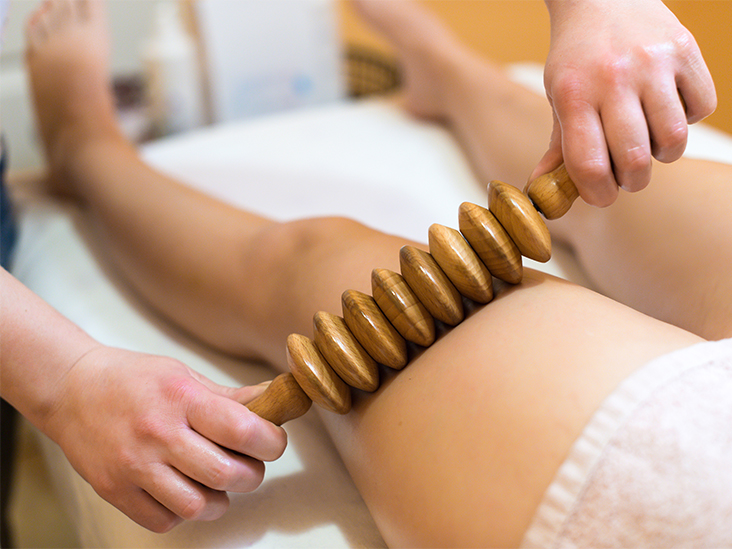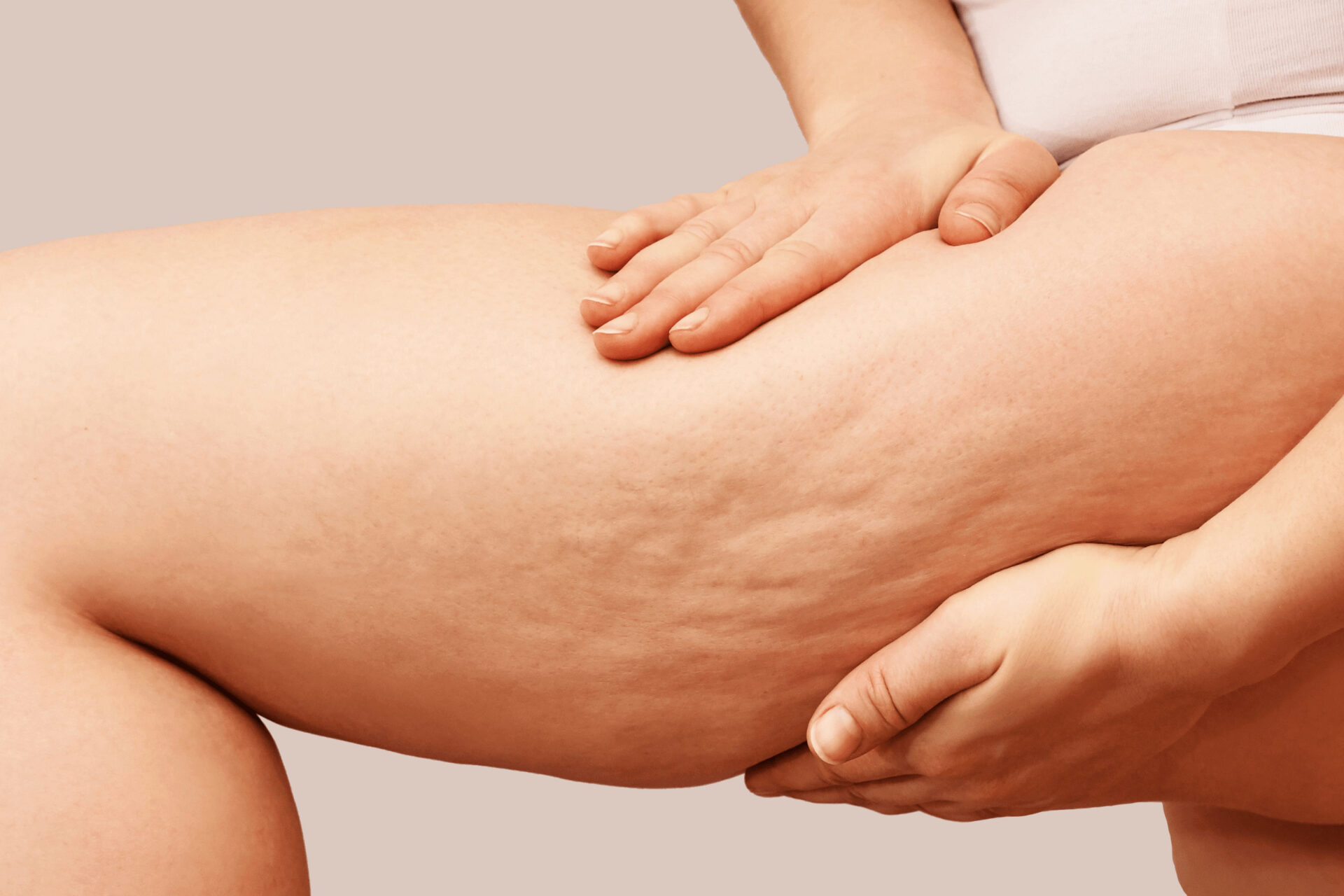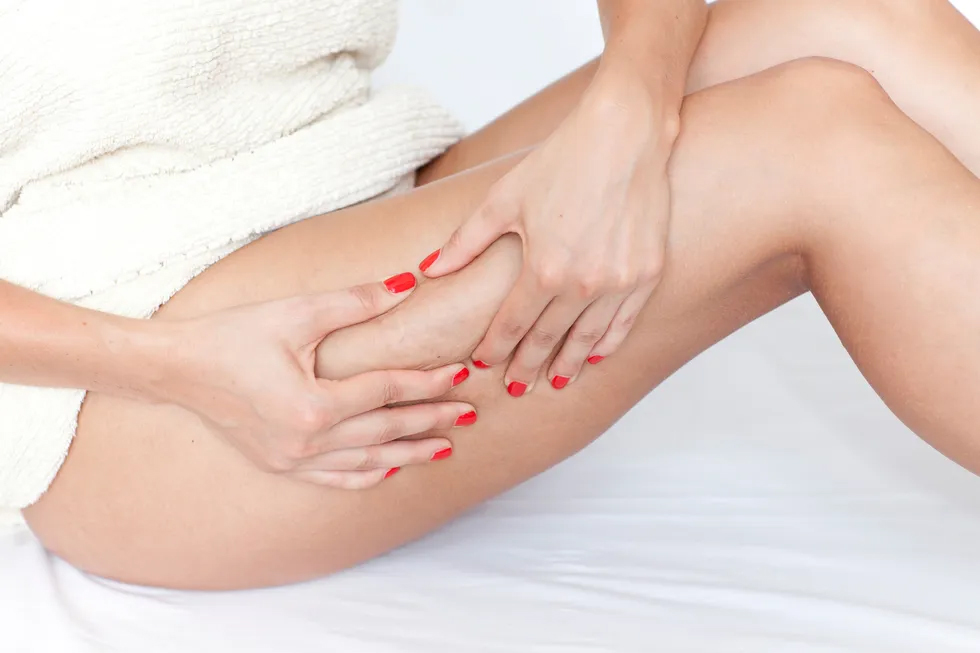The term cellulite comes from the word cell. It is a spelling of cellulitis, which means inflammation of the cells. Cellulitis is a serious medical condition caused by a bacterial infection in the subcutaneous layers of the skin. It is the dimpled appearance on the surface of the skin that is often described as “cottage cheese” or an “orange peel”, and is most common among women, especially on the thighs and buttocks.
Myth #1: Cellulite is a disease.
No, it is not a disease, but in fact an alteration of skin appearance. The outermost layer of skin is referred to as your epidermis. Immediately under this is the dermis, which is richly filled with hair follicles, sweat glands, blood vessels, nerve receptors and connective tissue. The next layer of tissue is the layer of subcutaneous fat. This uppermost layer of subcutaneous fat has been described as “standing fat-cell chambers” separated by connective tissue. From these fat-cell chambers, small projections of fat cells protrude into the dermis. This unevenness and irregularity of the subcutaneous fat gives skin the ‘bumpy’ appearance we call cellulite.
Myth#2: Cellulite is a women disease and has nothing to do with men.
It is true that cellulite is seen less in men, because, the layout of epidermis, dermis and uppermost part of the subcutaneous tissue is different in males. Men have thicker epidermis and dermis tissue layers in the thighs and buttocks. More distinctively dissimilar, the first layer of fat, which is slightly thinner in men, is assembled into polygonal units separated by crisscrossing connective tissue. The differences in subcutaneous fat cell structure in men and women occur during the third trimester of fetus development and are manifested at birth. Variations in hormones between genders largely explain this skin structure deviation. Men who are born deficient in male hormones will often have a subcutaneous fat appearance similar to females.
Myth#3: Massage and Body Manipulation can reduce cellulite
These techniques do not remove the cellulite, but may have a temporary effect in reducing the amount of ‘dimpling’ appearance. The skin manipulation can help improve skin’s appearance and thus reduce the dimply affect. Some common oils to use with your massage include peppermint or lavender, both of which help stimulate fat cells.

According to Dr. Len Kravitz “Endermologie (LPG, Fort Lauderdale, Fl) is a skin kneading technique developed about 10 years ago in France. This type of device has two rollers attached to an electrically powered device. Users wear nylon stockings to decrease the amount of friction. Treatments range from 35 to 45 minutes of rolling the skin of the hips, thighs, legs, buttocks and stomach. The little published research with this device does not show any legitimate efficacy in the treatment of cellulite.”
Myth# 4: Cellulite is a natural part of aging.
Well, that’s not true. The cell structure is laid down much before, that is during puberty. By the age of 30, the dermis reaches its maximal thickness. Around about the same time(35-40 yrs) the dermis area, which is bound together by the connective tissue starts to get looser, due to the aging process of the collagen and elastic fibers. This allows for more adipose cells to protrude into the dermis area, accentuating the sight of cellulite. In addition, an increased deposition of subcutaneous body fat may reflect a lifestyle of less exercise and changes in dietary consumption.

Myth# 5 It is easy to lose down cellulite with fasting
Sorry there, it is not only hard but impossible to melt away cellulite as even after you have melted away fat, some pockets of fat will still remain which will not dissolve, in fact these are the pockets of cellulite. “Cellulite if fat trapped within the fibers”, according to Dr Bruno Chikly, MD, DO, is the author of Silent Waves: Theory and Practice of Lymph Drainage Therapy.
Tips to Reduce the Prominence of Cellulite
- Aerobic exercise at least 3 to 5 times a week for at least 20 to 60 minutes will help create a satisfactory caloric deficit. Choose a mode of exercise that you enjoy such as walking, jogging, aerobic dance, elliptical training, rowing, cycling, swimming or stair stepping. If available, alternate modes of aerobic exercise to regularly give your body some variety.
- Resistance exercise program can go a long way to improve physical appearance. The subcutaneous fat rests on top of muscle, and if the muscle is weak and flaccid, this can contribute to the ‘bumpy’ effect of cellulite. Although there isn’t one best system of sets and repetitions to firm all of your leg muscles, regularly include the following exercises in your resistance training program.
- Squats and leg press for the buttocks and thigh muscles.
- Lunges for the thighs and buttocks.
- Hip adduction exercises for the inner thighs.
- Hip abduction exercises for the outer thighs.
- Leg curls for the back of the thighs.
- Avoid junk food- Instead of frying your foods, try grilling or broiling. Use oils that are lower in saturated fats or that are better for you such as olive oil and canola oil. Stay away from sweets.
- Avoid artificial colors, preservatives, and sugars.
- Stay Hydrated- When fighting cellulite you urgently need to look at the amount of pure fresh water you drink every day – and that amount does not include coffee, tea, juice or cola’s.
- Opt for a low fat healthy diet- Start eating more fruits, vegetable and whole grains. Oily fishes, nuts and seeds should also be added to your diet. Remember, drinking lots of water will also help flush the body and remove toxins more rapidly than dieting alone.

List of the fruits and vegetables that most benefit your body:
- Blueberries and blackberries
- Cherries
- Mangos
- Oranges
- Strawberries and raspberries
- Cranberries
- Grapefruit
- Apples
- Spinach
- Tomatoes
- Fennel
- Bell peppers
- Carrots
Disclaimer
The Content is not intended to be a substitute for professional medical advice, diagnosis, or treatment. Always seek the advice of your physician or other qualified health provider with any questions you may have regarding a medical condition.Original Article










